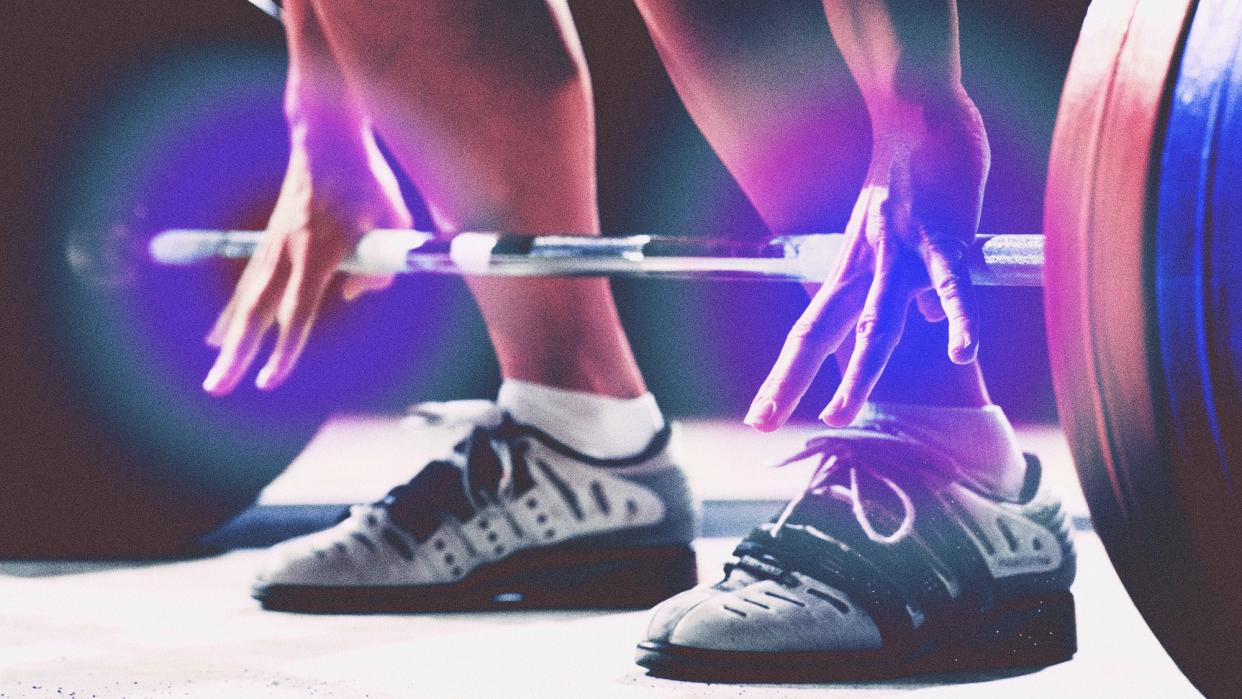Longevity Experts Say Grip Strength Is An Indicator of How You're Aging—Here's Why That Matters

Photograph: Getty Images; Collage: Gabe Conte
In our efforts to live longer, healthier lives, it’s easy to hone in on any new science that offers a quick, low-effort solution. In the last few years, grip strength has caught the attention of fitness editors and individuals eager to get ahead. And for good reason: Many studies show that grip strength is a biomarker of aging, which means that it provides an objective look at how well we are—or aren’t—aging.
It’s been correlated with an impressive number of health factors, including overall strength, upper limb function, bone mineral density, fractures, falls, malnutrition, cognitive impairment, depression, sleep problems, diabetes, and quality of life, according to a 2019 literature review. It can also be assessed to estimate flexibility, balance skills, and coordination skills. It’s so important, in fact, that a 2015 study “determined that grip strength was a more powerful predictor of cardiovascular mortality than systolic blood pressure.”
Medical professionals use this metric as a screenshot of your current health status, as well as a predictor of future outcomes. Ingrid Anderson, Doctor of Physical Therapy (DPT) and owner of Intown Physical Therapy measures the grip strength of her clients when they’re doing an initial evaluation on anyone over 60. They use a tool called a dynamometer, which shows the amount of force you generate when you squeeze it, measured in pounds or kilograms. It’s a simple, cheap way to get an accurate, preliminary reading on your health, she explains. But she rarely recommends grip-specific training.
Outside of the doctor or PT’s office, grip strength has far less relevance. While we don’t want to undersell the importance of a firm handshake, not everyone should order a grip strength trainer in hopes of boosting their longevity. “It's always so interesting when there's a headline and people come in and they say well, I need to strengthen my grip so that I reduce my chances of dying,” says Anderson. “No, no. If only it were that simple. Really what it comes down to, is that it is just a really good indication of your overall strength.”
When to Work Your Grip Strength
So while improving your grip strength won’t exactly make you live longer, should you ever directly train your grip strength? There are a few instances:
First, Anderson mentions that if somebody is having a complaint around their wrist, elbow, or hand, she will integrate grip strength work into rehabbing, especially for tennis elbow or golfer’s elbow, two overuse injuries caused by irritation or damage to the tendons that run from the hand to the elbow.
Another instance is if your grip is a limiting factor in your lifts, says Kirk Anderson, ISSA-certified personal trainer. For example, you may deadlift 225 pounds, and you’re only maxing out because you can’t hold on anymore. “The limiting factor for pretty much everybody is your grip,” says Anderson. “Your legs and back are strong enough to lift more weight than your hands can.”
How to Improve Your Grip Strength
When you’re considering how to improve your grip strength, it depends on your fitness background, says Kirk Anderson. If you already have a well-established workout routine, your grip strength exercises will look very different from someone who is starting from square one.
Let’s say you have some basic experience at the gym or working out at home. For most people, changing from machines to barbell or dumbbell exercises is a great first step. “Let's say you're normally doing a curl with a machine,” says Ingrid Anderson. “Guess what? You can kind of flatten your palm on that curl machine and not really get any grip work on it. If you're doing curls with a barbell, you have to work on your grip strength.” Another modification for weightlifters is to skip the lifting straps, she says, which take the weight off your grip, allowing you to lift more.
You can also incorporate full-body exercises that will work your grip. Ingrid recommends a farmer's carry, where you hold dumbbells or anything heavy (like a suitcase) alongside your body and walk slowly and intentionally. Kirk recommends dead hangs, where you simply hang from a pull-up bar with your shoulder blades engaged. Start with around 10 to 20 seconds and increase your time as your strength improves.
If you don’t have a fitness routine or have an existing injury, you should consult with a doctor or physical therapist to find the right exercises. But you could also start using a stress ball, tennis ball, or therapy putty to build a foundation because they’re relatively gentle, says Ingrid Anderson. Once you develop some strength, a step up would be a wrist roller. “Imagine holding a handle, and you’re simply turning it back and forth to wheel up a small weight,” says Kirk. You can start around three to five pounds, he advises, and then move up from there. Some gyms will have this equipment, but they’re also portable enough to keep at home.
According to both Andersons, the best thing you can do is to focus on living a well-balanced life with plenty of exercise and daily movement (although we’re not going to stop you if you want to improve your grip strength for a specific reason.) “If you just improve your grip directly, that's not going to help you age longer,” says Kirk Anderson. “If you're doing things, like playing tennis, being active, climbing, and your grip happens to improve, then yeah—that's going to improve your longevity and help you to age gracefully.” And the good thing? It’s never too late to start exercising or pick up a new activity. Or as Kirk Anderson puts it: “So as long as you're alive, you can transform."
Originally Appeared on GQ

